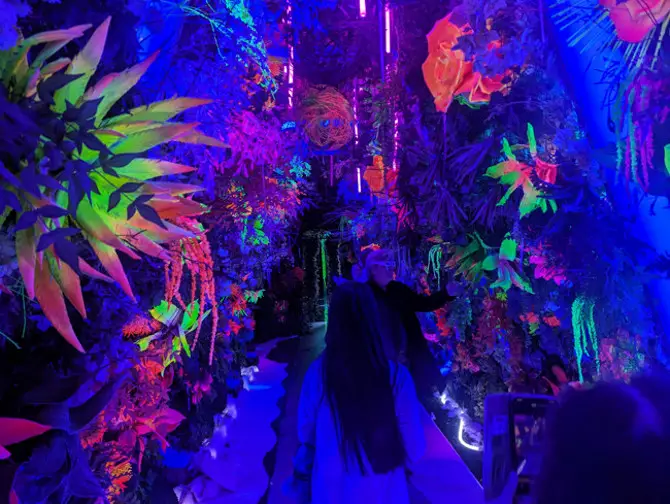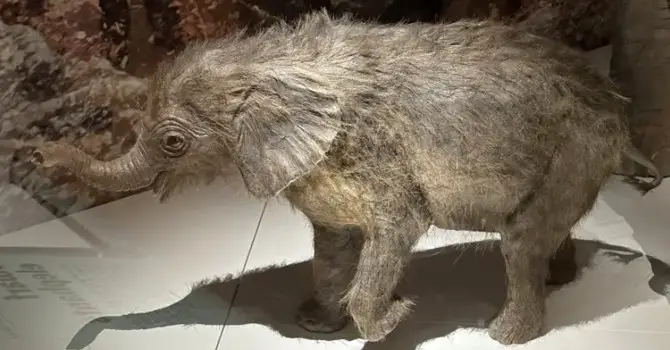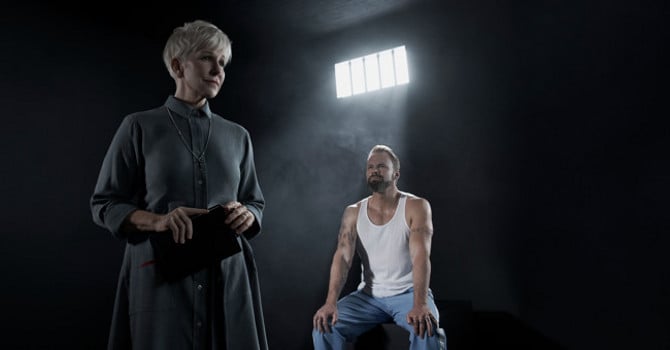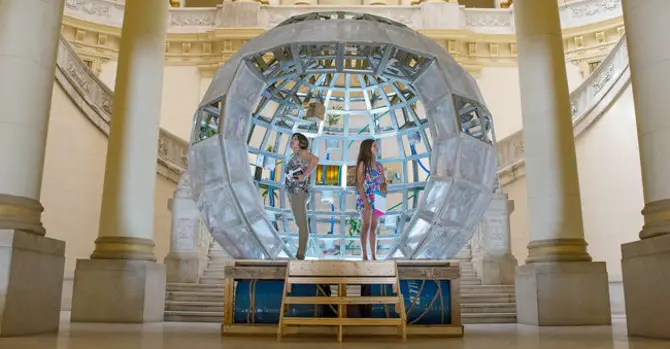Silicon City New York. Before the glitz and '80s glory days of Steve Jobs, Bill Gates, and California's Silicon Valley, there was already a digital revolution underway. A surprising amount of the innovation came from 1960s New York City, where companies like IBM were based. Silicon City: Computer History Made in New York, which opened Nov. 13 at the New-York Historical Society, celebrates the city’s pivotal role in tech, highlighting the innovations that transformed daily life. Just think: your smartphone is more powerful than a $5,000,000 1960s computer. This new exhibit gives that fact some history and context.
On display are nearly 300 artifacts, including early computers and telecommunications hardware, archival materials, photographs, digital artworks, and interactive experiences that immerse visitors in the evolution of technology. The exhibition, spanning from the 1840s to the 1980s, was curated by New-York Historical’s Chief Curator Stephen Edidin, with assistance from Research Associate Christian Panaite.
Silicon City opens with a visual retelling of the moment New Yorkers learned about computing, not just for company use, but for the general public, at the IBM Pavilion at the '64-'65 World’s Fair in Queens. Every 15 minutes, a group of 500 people entered an Eero Saarinen-designed theater known as “The Egg” to view a multimedia experience called “THINK” by the designers Charles and Ray Eames.


"The Egg," a major technological draw at the '64-'65 New York World's Fair. (Photo: NYHS)
The exhibit recognizes the important role women played in pushing along technological innovations. In 1935, IBM hired its first 25 women employees, college seniors that participated in IBM's systems service classes. Then there's Grace Hopper, a professor at Vassar College with a PhD in mathematics, who also served in the US Navy during WWII. After the war, Hopper was instrumental in writing and teaching the first computer program language, Cobol (still used today); she also came up with the term “debugging.”
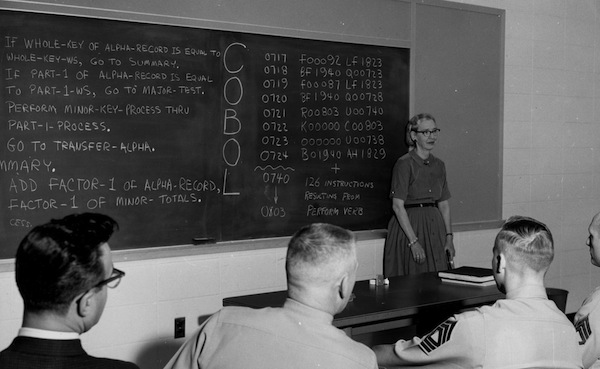
Grace Hopper, a professor and Navy officer, instructing students in Cobol, one of the first computer languages, which she played a major role in writing. (Photo: NYHS)
Other New York-based innovations on display include Sam Morse’s electric telegraph from the 1840s (dubbed "the Victorian Internet"); Thomas Edison’s early light bulbs (1880s); and the punched card machines from the 1890s that helped transform how to tally a census. Also on display is an IBM System 360, one of the first computers designed for multiple uses (1964); the mammoth IBM Selective Sequence Electronic Calculator (1948); the bestselling 5150—IBM’s first PC, from 1981 (weighing a mere 50 pounds); and a Telstar 1, a satellite used to televise the first live images from space in 1962. The exhibit even shows a couple of early flops, including AT&T’s Picturephone 2 Model, a precursor to Apple’s FaceTime that didn’t quite get off the ground because it was too expensive.
The exhibit further delves into New York City as a place where the marriage of "Art and Computing" thrived, showcasing experimental video projects that took place at the Museum of Modern Art, Bell Labs, and other sites.
Also covered in the exhibit is a section called Graphics, Music and Games, exploring inventions such as the Moog synthesizer, electric violin, and one of the first ever video games—Tennis for Two—designed in 1958 by Nobel Prize-winning physicist William A. Higinbotham at Brookhaven National Laboratory on Long Island. A couple of other vintage video games such as Space Invaders are on display, a nod to the arcade culture that became popular in New York in the late 1970s/early 1980s.
The final section, Regaining the Spotlight, is a New York City map marking the hundreds of New York-based tech companies that have popped up throughout New York City in recent years.
A terrific bonus for New York City students (and Title 1 Schools outside NYC) is that the New-York Historical Society will provide FREE coding workshops and exhibition field trips, in conjunction with the support of Google.org. Students will get to tour Silicon City and then learn to code using curricula developed by Google’s CS First. The first kids' workshop will be held on opening weekend on Saturday, Nov. 14. Innovative with Family Tech is recommended for kids 7 and up and takes place from 2 to 5pm. Kids can tap out secret messages on a Morse Code key; write their name on or send a text to a rebooted Model 15 Teleype (the peak of WWII-era technology); discover a historical figure’s personality deciphered by IBM robots using Watson software, and more.
Silicon City: Computer History Made in New York will remain on view through April 17, 2016. For more information, visit nyhistory.org.
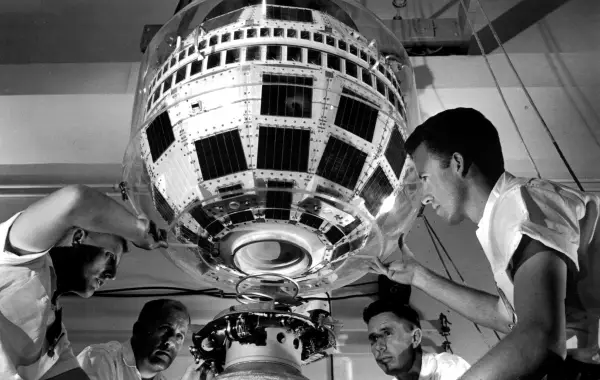
Bell Labs Engineers working on Telstar 1, ca 1961. Courtesy of Alcatel-Lucent/Bell Labs.


